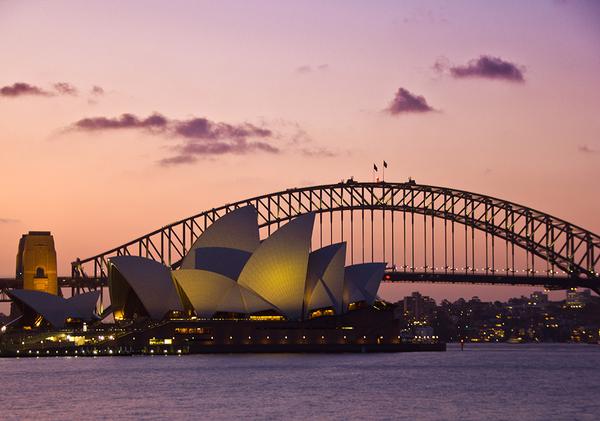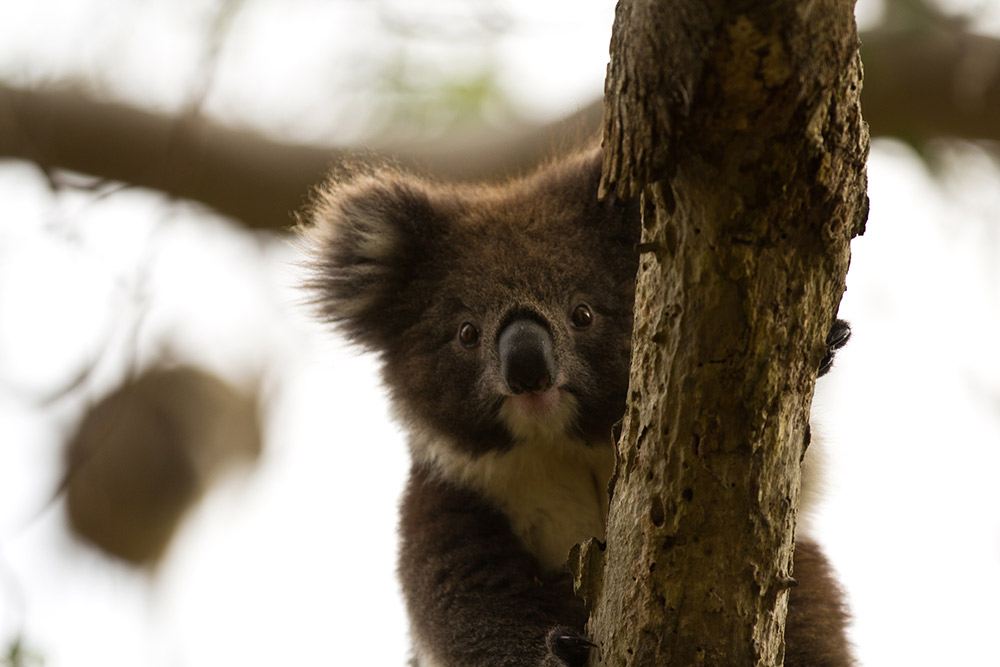The 6th largest country by land area, Australia has so much to be proud of. Vibrant metropolitan cities ring the coastline of the continent. Natural wonders, such as the Great Barrier Reef and the Kimberley, provide outdoor enthusiasts with plenty of stunning areas to explore. And the friendliness of Australians is legendary. Like many oft-trodden countries, myths have arisen amongst travellers about Australia — often based on grains of truth, but long since having taken on a life of their own. Below I debunk a few of the most well known stereotypes about the land down under.

The iconic Opera House in Sydney.
1. Everyone says “G’Day, mate”
A phrase commonly associated with Australians, “G’day, mate” has become a symbol for the land of Oz through pop culture. While some Australians do say “G’day, mate,” whether or not locals use this phrase varies widely across the country. More commonly used Australian terms include tea (refers to dinner, but could also be used in reference to any meal after breakfast), bogan (someone from the country or rural areas), chockers (an out-there situation, e.g., “the traffic is just chockers”), rock up (to arrive to a place, usually said with a lot of gusto), jumper (a sweater), budgie smugglers (a tiny Speedo that men wear).

Check out the 12 Apostles on the Great Ocean Road – a great day trip from Melbourne.
2. In Australia, people eat Vegemite for breakfast, lunch, and dinner
A common yeast-based spread in Australia — often eaten for breakfast lightly spread on buttered toast or crumpets — Vegemite tends to illicit an extreme reaction; either you love it or hate it. It’s worth a try when visiting, but if you don’t take to the stuff, don’t worry, there are plenty of Australians who will share your sentiment. Plus, it’s not the only ’mite consumed in Australia, they also enjoy Marmite and Promite.

Graffiti Alley in Melbourne.
3. The koala is a bear and kangaroos roam the streets
The koala and the kangaroo are currently duking it out for the national animal of Australia. Only found Down Under, koalas (misnamed for their bear-like features, particularly their rounded ears) are actually marsupials.

Koalas are often mistaken to be bears – particularly for their rounded ears.
While koalas are only found in the wild in a few areas around Australia, another marsupial, the kangaroo (and its cousins the wallaby and wallaroo), is quite common throughout the continent. Often misperceived as roaming through the streets in Australia, kangaroos are usually found in small towns and rural areas, but rarely found in major cities (except at dawn in some golf courses and outlying suburbs). To see kangaroos, spend time in the countryside, especially during the early morning hours.
4. Toilets flush in reverse
The myth that toilets in Australia, and other Southern Hemisphere countries, flush in the opposite direction as those in the Northern Hemisphere began with a natural phenomenon called the Coriolis effect. This natural occurrence determines how moving objects are deflected off the inside of rotating objects. The phenomenon impacts weather on Earth — but as it turns out, not toilets. While storms in the Southern Hemisphere do rotate clockwise due to this effect (and Northern Hemisphere storms rotate counterclockwise), it doesn’t impact smaller objects, such as drains.
Drains in the Southern Hemisphere rotate depending on how the manufacturer designed them — which is usually counterclockwise (similar to those in the Northern Hemisphere). So that toilet in Australia flushes the same direction as its cousin in the northern part of the planet.

Hop aboard and sail around the Whitsunday Islands, thousands of kilometres north of Brisbane.
5. Everything in Australia will kill you
Australia’s wild landscape, harsh climate in parts of the country (such as the Red Center), and some of the deadliest animals on the planet have led it to be incorrectly perceived as a dangerous place for travellers. While it is home to some pretty fearsome critters, the idea that “everything will kill you” hardly applies.
There are saltwater crocodiles that grow up to 6m (19 ft). And it is home to the deadliest spider in the world, Great White sharks, and Box jellyfish — so yes, Australia does have a pretty impressive list of animals. But, very few deaths per year actually occur from wildlife. A little common sense, such as not camping near signs that say “Warning: Crocodiles,” will greatly reduce your chance of having any unpleasant wildlife encounters. Travellers visiting Oz do not need to worry about the wildlife, in fact the opposite is true, it’s a great reason to visit.

Golden hour at Uluru in Australia's Red Centre.
Getting There
G Adventures runs a number of departures in Australia encompassing a wide range of departure dates and activities to cater to different tastes. We’re thrilled at the prospect of showing you this big blue planet of ours — check out our small group trips here.























